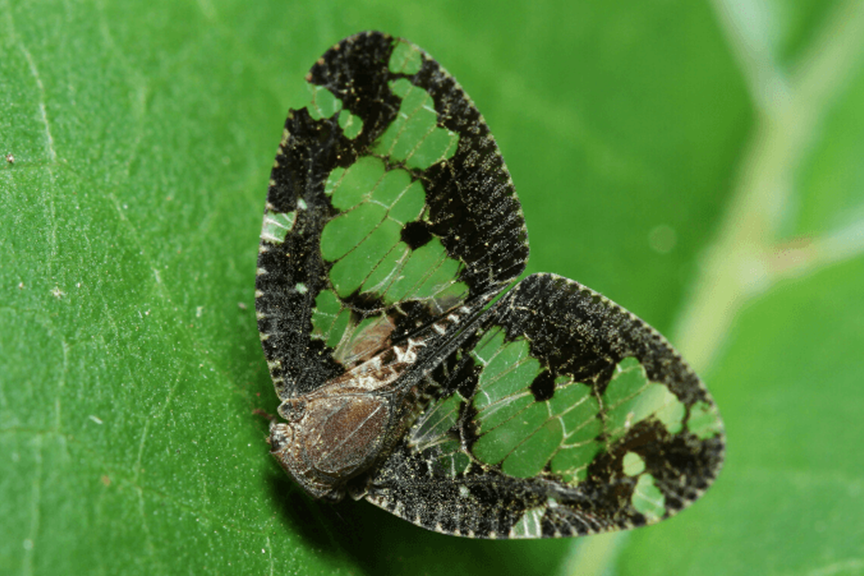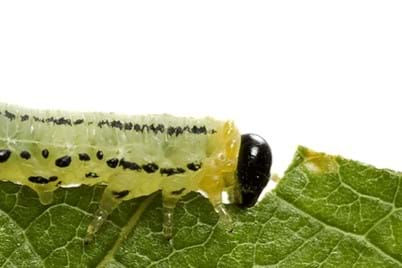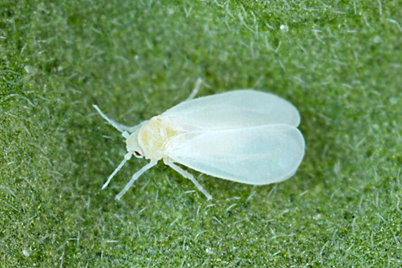After mating, females lay eggs in late summer to early autumn, with one generation per year. Eggs are laid inside dead or living stems, leaf midribs and sometimes in bamboo stakes. Eggs are laid in a neat continuous row which are inserted into plant tissue using a sharp tube-like organ (ovipositor). After egg is inserted, pulped plant fibres are used to plug the hole, this plug may remain visible at the surface. Eggs are cream-coloured, oval-shaped and up to 0.87mm long.
Eggs hatch in spring and juveniles (nymphs) emerge. Nymphs are similar to adults, except nymphs are smaller (less than 1 mm in length), wingless and paler in colour. Nymphs are sometimes called “fluffy bums” attributed to the tuft of white fluff (filaments) attached to the tip of their rear (abdomen). These long filaments are sometimes in a circular fan shape and are reminiscent of a peacock's tail. Nymphs grow through various developmental (nymphal) stages and cast skins (moult) after each of the 5 nymphal stages. Nymphs are prevalent from early spring through to late summer.
After the final developmental stage, adults take a further 2 weeks to mature, and are then ready for mating. Adults are most active from mid-summer to early winter.








